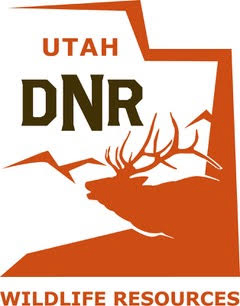Conservation Gets a Modest Bump in the 2017 Spending Bill
Omnibus spending package provides for sage grouse conservation, drought resiliency, conservation practices on farms and ranches, and one step forward for the Everglades
WASHINGTON, D.C. — Congress has passed an omnibus appropriations bill for fiscal year 2017 with some increased funding for conservation and no harmful policy riders. The House and Senate’s investment in conservation is seemingly at odds with the Trump Administration’s budget outline for fiscal year 2018, which would deeply cut most conservation programs and entirely eliminate others, including Great Lakes and Chesapeake Bay restoration efforts.
“While last-minute funding solutions are not the ideal way to govern, sportsmen and women should be heartened to see Congress endorse funding levels mostly on par with what we got in 2016 and even give a modest bump to the things we care about, including healthier waterways, stronger sage grouse populations, restoration assistance in the Everglades, and better conservation practices on private lands,” says Whit Fosburgh, president and CEO of the Theodore Roosevelt Conservation Partnership.
Tucked within more than 1,600 pages detailing government spending through September 30, the FY2017 omnibus package includes the following:
- An $8.9-million increase for sage grouse conservation programs and no riders undermining the federal conservation plans that helped keep this iconic Western game bird off the endangered species list in 2015.
- $864 million for Conservation Operations at the Natural Resources Conservation Service within U.S. Department of Agriculture—that’s about $13.5 million more than last year and exceeds President Obama’s last budget request by more than $1 million.
- A $10-million increase for the Conservation Technical Assistance Program, which provides farmers and ranchers with the technical expertise to put conservation on the ground using Farm Bill dollars. This will help NRCS to deliver more than $5 billion in conservation programs to farmers, ranchers, and private foresters next year, improving fish and wildlife habitat and water quality nationwide.
- $150 million for the Watershed and Flood Prevention Operations Program, which hasn’t been funded since 2002. This will help states, local governments, and tribes to enhance fish and wildlife habitat, improve water quality, reduce erosion, control sediment, and construct wetlands.
- A 30-percent increase for the WaterSMART grant program, in which the Bureau of Reclamation works with water users to help ensure rivers and streams have enough water flows to support fish, agriculture, and cities during droughts.
- More than $10 million in funding for the National Park Service to support interagency coordination in the Everglades. Additional funding will be needed in the next fiscal year to carry construct a reservoir recently approved by the Florida legislature. This is critical to improving water quality and habitat in one of the country’s most popular fisheries.
- Two Farm Bill conservation programs were trimmed through the Congressional budget process known as Changes in Mandatory Program Spending, or CHIMPS. The Environmental Quality Incentives Program (EQIP) was cut by $179 million and the Regional Conservation Partnership Program was cut by $28 million.
The spending agreement for 2017 arrives late in the congressional calendar, and thorough plans from the White House for fiscal year 2018—which begins October 1—are not expected until May 22, at least two months later than normal. Sportsmen and women will remain active in the debate over investments in habitat, access, and the outdoor recreation economy.
“We’re encouraged by the final FY17 funding for our parks, refuges, forests, and other public lands and waters,” says Alex Boian, vice president of government affairs for the Outdoor Industry Association, which just released its newest Outdoor Recreation Economy Report. “These investments in our nation’s outdoor recreation assets ensure the continued growth of the $887-billion outdoor recreation economy and the support of 7.6 million American jobs. Time and time again, we have seen that when our elected leaders invest in America’s great outdoors, it results in healthy communities and healthy economies nationwide.”
For more information on the TRCP visit our website.
Connect with us on Facebook.
Follow us on Twitter.
Subscribe to the Roosevelt Report.
Inspired by the legacy of Theodore Roosevelt, the TRCP is a coalition of organizations and grassroots partners working together to preserve the traditions of hunting and fishing. By ensuring access to quality fish and wildlife habitat, we’re also safeguarding the $646 billion that sportsmen and women help contribute to the American economy.






